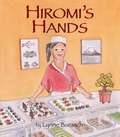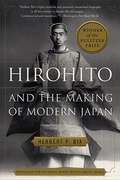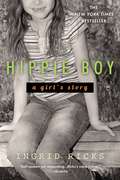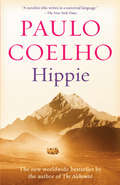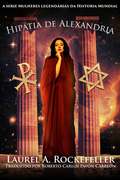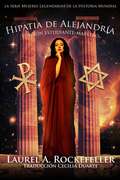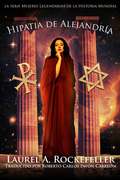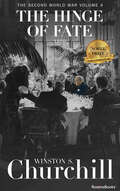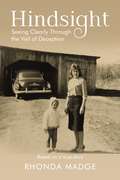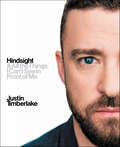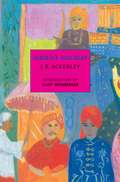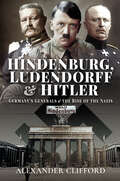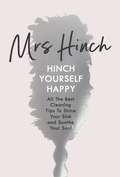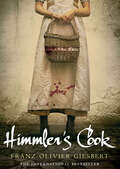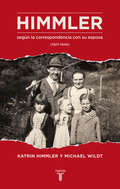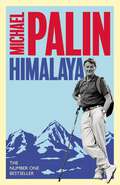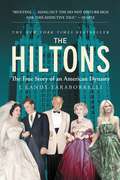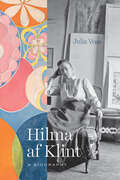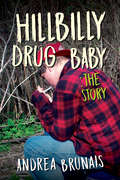- Table View
- List View
Hiromi's Hands
by Lynne BaraschHiromi's Hands is the true story of a young girl's determination to follow her dream, and a tribute to the loving family who supported her. Readers will cheer for Hiromi's success, and maybe decide to taste some sushi, too!
Hirohito and the Making of Modern Japan
by Herbert P. BixWinner of the Pulitzer Prize. In this groundbreaking biography of the Japanese emperor Hirohito, Herbert P. Bix offers the first complete, unvarnished look at the enigmatic leader whose sixty-three-year reign ushered Japan into the modern world. Never before has the full life of this controversial figure been revealed with such clarity and vividness. Bix shows what it was like to be trained from birth for a lone position at the apex of the nation's political hierarchy and as a revered symbol of divine status. Influenced by an unusual combination of the Japanese imperial tradition and a modern scientific worldview, the young emperor gradually evolves into his preeminent role, aligning himself with the growing ultranationalist movement, perpetuating a cult of religious emperor worship, resisting attempts to curb his power, and all the while burnishing his image as a reluctant, passive monarch. Here we see Hirohito as he truly was: a man of strong will and real authority.Supported by a vast array of previously untapped primary documents, Hirohito and the Making of Modern Japan is perhaps most illuminating in lifting the veil on the mythology surrounding the emperor's impact on the world stage. Focusing closely on Hirohito's interactions with his advisers and successive Japanese governments, Bix sheds new light on the causes of the China War in 1937 and the start of the Asia-Pacific War in 1941. And while conventional wisdom has had it that the nation's increasing foreign aggression was driven and maintained not by the emperor but by an elite group of Japanese militarists, the reality, as witnessed here, is quite different. Bix documents in detail the strong, decisive role Hirohito played in wartime operations, from the takeover of Manchuria in 1931 through the attack on Pearl Harbor and ultimately the fateful decision in 1945 to accede to an unconditional surrender. In fact, the emperor stubbornly prolonged the war effort and then used the horrifying bombings of Hiroshima and Nagasaki, together with the Soviet entrance into the war, as his exit strategy from a no-win situation. From the moment of capitulation, we see how American and Japanese leaders moved to justify the retention of Hirohito as emperor by whitewashing his wartime role and reshaping the historical consciousness of the Japanese people. The key to this strategy was Hirohito's alliance with General MacArthur, who helped him maintain his stature and shed his militaristic image, while MacArthur used the emperor as a figurehead to assist him in converting Japan into a peaceful nation. Their partnership ensured that the emperor's image would loom large over the postwar years and later decades, as Japan began to make its way in the modern age and struggled -- as it still does -- to come to terms with its past.Until the very end of a career that embodied the conflicting aims of Japan's development as a nation, Hirohito remained preoccupied with politics and with his place in history. Hirohito and the Making of Modern Japan provides the definitive account of his rich life and legacy. Meticulously researched and utterly engaging, this book is proof that the history of twentieth-century Japan cannot be understood apart from the life of its most remarkable and enduring leader.
Hirohito And The Making Of Modern Japan
by Herbert P. BixWinner of the Pulitzer PrizeIn this groundbreaking biography of the Japanese emperor Hirohito, Herbert P. Bix offers the first complete, unvarnished look at the enigmatic leader whose sixty-three-year reign ushered Japan into the modern world. Never before has the full life of this controversial figure been revealed with such clarity and vividness. Bix shows what it was like to be trained from birth for a lone position at the apex of the nation's political hierarchy and as a revered symbol of divine status. Influenced by an unusual combination of the Japanese imperial tradition and a modern scientific worldview, the young emperor gradually evolves into his preeminent role, aligning himself with the growing ultranationalist movement, perpetuating a cult of religious emperor worship, resisting attempts to curb his power, and all the while burnishing his image as a reluctant, passive monarch. Here we see Hirohito as he truly was: a man of strong will and real authority.Supported by a vast array of previously untapped primary documents, Hirohito and the Making of Modern Japan is perhaps most illuminating in lifting the veil on the mythology surrounding the emperor's impact on the world stage. Focusing closely on Hirohito's interactions with his advisers and successive Japanese governments, Bix sheds new light on the causes of the China War in 1937 and the start of the Asia-Pacific War in 1941. And while conventional wisdom has had it that the nation's increasing foreign aggression was driven and maintained not by the emperor but by an elite group of Japanese militarists, the reality, as witnessed here, is quite different. Bix documents in detail the strong, decisive role Hirohito played in wartime operations, from the takeover of Manchuria in 1931 through the attack on Pearl Harbor and ultimately the fateful decision in 1945 to accede to an unconditional surrender. In fact, the emperor stubbornly prolonged the war effort and then used the horrifying bombings of Hiroshima and Nagasaki, together with the Soviet entrance into the war, as his exit strategy from a no-win situation. From the moment of capitulation, we see how American and Japanese leaders moved to justify the retention of Hirohito as emperor by whitewashing his wartime role and reshaping the historical consciousness of the Japanese people. The key to this strategy was Hirohito's alliance with General MacArthur, who helped him maintain his stature and shed his militaristic image, while MacArthur used the emperor as a figurehead to assist him in converting Japan into a peaceful nation. Their partnership ensured that the emperor's image would loom large over the postwar years and later decades, as Japan began to make its way in the modern age and struggled -- as it still does -- to come to terms with its past.Until the very end of a career that embodied the conflicting aims of Japan's development as a nation, Hirohito remained preoccupied with politics and with his place in history. Hirohito and the Making of Modern Japan provides the definitive account of his rich life and legacy. Meticulously researched and utterly engaging, this book is proof that the history of twentieth-century Japan cannot be understood apart from the life of its most remarkable and enduring leader.
Hippie Boy
by Ingrid RicksDiscover the unforgettable New York Times bestselling memoir about growing up in a dysfunctional Mormon family--and finding escape, adventure, and hard-earned wisdom on the road... What would you do if your stepfather pinned you down and tried to cast Satan out of you? For thirteen-year-old Ingrid, the answer is simple: RUN. For years Ingrid Ricks yearned to escape the poverty and the suffocating brand of Mormon religion that oppressed her at home. Her chance came when she was thirteen and took a trip with her divorced dad, traveling throughout the Midwest, selling tools and hanging around with the men on his shady revolving sales crew. It felt like freedom from her controlling mother and cruel, authoritarian stepfather--but it came with its own disappointments and dysfunctions, and she would soon learn a lesson that would change her life: she can't look to others to save her; she has to save herself.
Hippie
by Paulo CoelhoThe worldwide bestseller by the author of The Alchemist takes us on a journey back in time, from South America to Holland to Nepal, drawing on the rich experiences of his own life to relive the dreams of a generation that longs for peace. • "A novelist who writes in a universal language." —Los Angeles Times In Hippie, he tells the story of Paulo, a young, skinny Brazilian man with a goatee and long, flowing hair, who dreams of becoming a writer, and Karla, a Dutch woman in her twenties who has been waiting to find a companion to accompany her on the fabled hippie trail to Nepal. After meeting each other in Amsterdam, she convinces Paulo to join her on a trip aboard the Magic Bus that travels from Amsterdam to Istanbul and across Central Asia to Kathmandu. As they embark on this journey together, Paulo and Karla explore a love affair that awakens them on every level and leads to choices and decisions that will set the course for their lives thereafter.
Hipátia de Alexandria
by Laurel A. RockefellerQuando o mundo ocidental caiu na escuridão, ela ousou defender a luz. Nascida em 355 EC, após o reinado de Constantino, Hipátia de Alexandria viveu em um império romano em colapso, um mundo onde a obediência às autoridades religiosas superava a ciência, onde razão e lógica ameaçavam a nova ordem mundial. Era um mundo à beira da Idade das Trevas, um mundo decidindo a questão da ciência versos religião, versos liberdade ortodoxia, versos de tolerância ódio. Por mais de 40 anos, Hipátia ficou entre a idade das trevas e a luz da filosofia clássica, das artes e das ciências. Embora nenhum de seus livros tenha sobrevivido às agressivas queimadas de livros de fanáticos religiosos, seu legado continua sendo o de um dos maiores cientistas de todos os tempos. Esta é a sua história verdadeira e fascinante. Inclui bibliografia, um cronograma detalhado e coordenadas de latitude e longitude para as principais cidades do Império Romano, para que você possa explorar as maravilhas dos céus com Hypatia.
Hipatia de Alejandría: Edición Estudiante - Maestro (Mujeres Legendarias de la Historia Mundial #9)
by Laurel A. RockefellerDefender la Luz Mientras el mundo occidental caía en la oscuridad, ella se atrevió a defender la luz. Hipatia de Alejandría, nacida en el año 355, tras el reinado de Constantino, vivió en un Imperio Romano que se derrumbaba, un mundo en el que la obediencia a las autoridades religiosas triunfaba sobre la ciencia, en el que la razón y la lógica amenazaban el nuevo orden mundial. Era un mundo al borde de la Edad Media, un mundo que decidía la cuestión de la ciencia versus la religión, la libertad versus la ortodoxia, la tolerancia versus el odio. Durante más de 40 años, Hipatia se interpuso entre la Edad Media y la luz de la filosofía, las artes y las ciencias clásicas. Aunque ninguno de sus libros sobrevivió a las agresivas quemas de libros de los fanáticos religiosos, su legado sigue siendo el de una de las más grandes científicas de todos los tiempos. La edición para estudiantes y profesores incluye preguntas de estudio desafiantes al término de cada capítulo, además de una detallada línea de tiempo y una extensa lista de lecturas sugeridas.
Hipatia de Alejandría
by Laurel A. Rockefeller Roberto Carlos Pavón CarreónCuando el mundo occidental cayó en la oscuridad, ella se atrevió a defender la Luz. Nacida en 355 d.C., tras el reinado de Constantino, Hipatia de Alejandría vivía en un Imperio Romano colapsado, un mundo donde la obediencia a las autoridades religiosas venció a la ciencia, donde la razón y la lógica amenazaban el nuevo orden mundial. Era un mundo al borde de la Edad Oscura, un mundo que decidía la cuestión de la ciencia contra la religión, libertad contra la ortodoxia, tolerancia contra el odio. Durante más de 40 años, Hipatia estuvo entre las edades oscuras y la luz de la filosofía clásica, las artes y las ciencias. Aunque ninguno de sus libros sobrevivió a la agresiva quema de libros de los fanáticos religiosos, su legado sigue siendo el de una de los mejores científicos de todos los tiempos. Esta es su fascinante historia real. Incluye bibliografía, una línea de tiempo detallada y coordenadas de latitud y longitud para las principales ciudades del Imperio Romano para que pueda explorar las maravillas de los cielos con Hipatia.
Hip Hop: A Short History (Superstars of Hip-Hop)
by C. F. EarlToday, hip-hop is everywhere. In music, fashion, art, and entertainment, hip-hop has become a language that we all understand. But it hasn't been that way for very long. Hip-hop grew from the neighborhoods of New York City to become a major part of life around the world. Learn about how slavery and the civil rights movement helped lead to the birth of hip-hop. Read about how break dancing, graffiti, and DJs all added to hip-hop. Find out how hip-hop has changed over the years. Hip-Hop: A Short History tells the story of how hip-hop started and how it became popular all over the world.
The Hinge of Fate (Winston S. Churchill The Second World Wa #4)
by Winston S. ChurchillThe British prime minister recounts battles from Midway to Stalingrad, and how the Allies turned the tide of WWII: &“Superlative.&” —The New York Times The Hinge of Fate is the dramatic account of the Allies&’ changing fortunes. In the first half of the book, Winston Churchill describes the fearful period in which the Germans threaten to overwhelm the Red Army, Rommel dominates the war in the desert, and Singapore falls to the Japanese. In the span of just a few months, the Allies begin to turn the tide, achieving decisive victories at Midway and Guadalcanal, and repulsing the Germans at Stalingrad. As confidence builds, the Allies begin to gain ground against the Axis powers. This is the fourth in the six-volume account of World War II told from the unique viewpoint of the man who led his nation in the fight against tyranny. The series is enriched with extensive primary sources, as we are presented with not only Churchill&’s retrospective analysis of the war, but also memos, letters, orders, speeches, and telegrams, day-by-day accounts of reactions as the drama intensifies. Throughout these volumes, we listen as strategies and counterstrategies unfold in response to Hitler&’s conquest of Europe, planned invasion of England, and assault on Russia, in a mesmerizing account of the crucial decisions made as the fate of the world hangs in the balance. &“No memoirs by generals or politicians . . . are in the same class.&” —The New York Times
The Hinge of Fate: 1950 (Winston S. Churchill The Second World Wa #4)
by Winston S. ChurchillThe British prime minister recounts battles from Midway to Stalingrad, and how the Allies turned the tide of WWII: &“Superlative.&” —The New York Times The Hinge of Fate is the dramatic account of the Allies&’ changing fortunes. In the first half of the book, Winston Churchill describes the fearful period in which the Germans threaten to overwhelm the Red Army, Rommel dominates the war in the desert, and Singapore falls to the Japanese. In the span of just a few months, the Allies begin to turn the tide, achieving decisive victories at Midway and Guadalcanal, and repulsing the Germans at Stalingrad. As confidence builds, the Allies begin to gain ground against the Axis powers. This is the fourth in the six-volume account of World War II told from the unique viewpoint of the man who led his nation in the fight against tyranny. The series is enriched with extensive primary sources, as we are presented with not only Churchill&’s retrospective analysis of the war, but also memos, letters, orders, speeches, and telegrams, day-by-day accounts of reactions as the drama intensifies. Throughout these volumes, we listen as strategies and counterstrategies unfold in response to Hitler&’s conquest of Europe, planned invasion of England, and assault on Russia, in a mesmerizing account of the crucial decisions made as the fate of the world hangs in the balance. &“No memoirs by generals or politicians . . . are in the same class.&” —The New York Times
Hindsight: Seeing Clearly through the Veil of Deception
by Rhonda MadgeIn Joyce Meyer’s bestselling book, Battlefield of the Mind, she attests that indeed “there is a war which rages in our minds.” Hindsight takes readers on a journey through Rhonda Madge’s tumultuous life to reveal how she fell prey to anxious thoughts that molded her mind through a belief in the whispered lies.A horrific event at the age of seventeen left Rhonda continually searching for something or someone to fill the dark chasm of her heart. Tears seemed to puddle around her wherever she went. However, she learned to carefully hide herself in a masquerade put on for the outside world, allowing her to project that all was well with her soul even as the slow decay continued from within. Those who find themselves pretending will be drawn to the answers her story presents.But it was God who worked to lift the veil from Rhonda’s eyes, allowing her to see that, though she thought He was far from her, He remained at arm’s length. Thus a seeker’s interest will be peeked as they read about Rhonda’s exploration of who and what God truly is--a loving, personal God. Those who struggle with life’s hardships will be encouraged and inspired to practice Rhonda’s perseverance.In a world where sorrow is often heaped upon sorrow, this very real story bares truth that will leave readers filled with hope.
Hindsight: & All the Things I Can't See in Front of Me
by Justin TimberlakeAn Instant New York Times Bestseller"I can't help that my music shows who I am in this moment, what I'm drawn to, what I'm wondering about. I don't want to help it. What you hear in the words, what you feel in those songs—that's what I was feeling when I wrote them. I want you to see me, just like I want to see you." — Justin TimberlakeIn his first book, Justin Timberlake has created a characteristically dynamic experience, one that combines an intimate, remarkable collection of anecdotes, reflections, and observations on his life and work with hundreds of candid images from his personal archives that range from his early years to the present day, in locations around the world, both on and off the stage. Justin discusses many aspects of his childhood, including his very early love of music and the inspiration behind many of his hit songs and albums.He talks about his songwriting process, offering the back story to many of his hits. He muses on his collaborations with other artists and directors, sharing the details of many performances in concert, TV comedy, and film. He also reflects on who he is, examining what makes him tick, speaking candidly about fatherhood, family, close relationships, struggles, and his search to find an inner calm and strength. Living a creative life, observing and finding inspiration in the world, taking risks and listening to an inner voice—this is Justin Timberlake.
Hindoo Holiday
by J. R. Ackerley Eliot WeinbergerIn the 1920s, the young J. R. Ackerley spent several months in India as the personal secretary to the maharajah of a small Indian principality. In his journals, Ackerley recorded the Maharajah's fantastically eccentric habits and riddling conversations, and the odd shambling day-to-day life of his court. Hindoo Holiday is an intimate and very funny account of an exceedingly strange place, and one of the masterpieces of twentieth-century travel literature.
Hindenburg, Ludendorff and Hitler: Germany's Generals and the Rise of the Nazis
by Alexander CliffordThey are two of twentieth-century history’s most significant figures, yet today they are largely forgotten – Paul von Hindenburg and Erich Ludendorff, Germany’s First World War leaders. Although defeat in 1918 brought an end to their ‘silent dictatorship’, both generals played a key role in the turbulent politics of the Weimar Republic and the rise of the Nazis. Alexander Clifford, in this perceptive reassessment of their political careers, questions the popular image of these generals in the English-speaking world as honourable ‘Good Germans’. For they were intensely political men, whose ideas and actions shaped the new Germany and ultimately led to Hitler’s dictatorship. Their poisonous wartime legacy was the infamous stab-in-the-back myth. According to the generals, the true cause of the disastrous defeat in the First World War was the betrayal of the army by politicians, leftists and Jews on the home front. This toxic conspiracy theory polluted Weimar politics and has been labelled the beginning of ‘the twisted road to Auschwitz’. Hindenburg and Ludendorff’s political fortunes after the war were markedly different. Ludendorff inhabited the far-right fringes and engaged in plots, assassinations and conspiracies, playing a leading role in failed uprisings such as Hitler’s 1923 Beer Hall Putsch. Meanwhile Hindenburg was a vastly more successful politician, winning two presidential elections and serving as head of state for nine years. Arguably he bore even more responsibility for the destruction of democracy, for he and the nationalist right he led sought, through Hitler, to remould the Weimar system towards authoritarianism.
'Hind Swaraj' and Other Writings
by Anthony J. Parel Mahatma GandhiHind Swaraj is Mahatma Gandhi's fundamental work. Not only is it key to understanding his life and thoughts, but also the politics of South Asia in the first half of the twentieth century. Celebrating 100 years since Hind Swaraj was first published in a newspaper, this centenary edition includes a new Preface and Editor's Introduction, as well as a new chapter on 'Gandhi and the 'Four Canonical Aims of Life''. The volume presents a critical edition of the 1910 text of Hind Swaraj, fully annotated and including Gandhi's own Preface and Foreword (not found in other editions). Anthony J. Parel sets the work in its historical and political contexts and analyses the significance of Gandhi's experiences in England and South Africa. The second part of the volume contains some of Gandhi's other writings, including his correspondence with Tolstoy and Nehru.
Hinch Yourself Happy: All The Best Cleaning Tips To Shine Your Sink And Soothe Your Soul
by Mrs HinchStart the new year with a clean house and a calm mind with Mrs Hinch's very best cleaning tipsTHE NUMBER ONE SUNDAY TIMES BESTSELLER FROM THE INSTAGRAM SENSATION'Will not only help you transform your home and make it sparkle, but also show you how cleaning can soothe anxiety and stress' BEST BOOKS TO HELP YOU ORGANISE YOUR HOME IN 2020, MAIL ONLINE ______________'The sensation' Sun'We're made about Mrs Hinch' Vogue_______Cleaning - aka hinching - doesn't have to be that job you dread, not when Mrs Hinch is here to show you her sparkly ways.At over 3 million followers and counting, she has taken the nation by storm with her infectiously addictive charm, clever tidying tips and passionate belief in cleaning. Mrs Hinch invites you into her home and while inside you'll discover how a spot of cleaning is the perfect way to cleanse the soul. She'll even share the story of Mr and Mrs Hinch and their 'dorgeous' boy, Henry.Inside you'll find out:- How cleaning can soothe anxiety and stress- Mrs Hinch's must-haves- Step-by-step guides to hinching your home - And so much more! With the help of her cloth family, Mrs Hinch will help you turn your house into a home. Whether you're a daily duster or looking for a monthly makeover, Hinch Yourself Happy shows you how to create not only a cleaner house, but a calmer you.If you want your kitchen to sparkle like Meghan Markle, then this is the book for you.'Doing for household chores what Marie Kondo did for tidying. A step-by-step guide to achieving a spotless and immaculately tidy home' Daily Mirror'My new cleaning goddess' Daily Telegraph
Himmler's Cook
by Franz-Olivier GiesbertA gloriously rich and blackly funny French bestseller about Rose, a 105-year-old chef who has experienced life at its fullest. . . and at its most deadly. Rose has endured more than her fair share of hardships: the Armenian genocide, the Nazi regime, and the delirium of Maoism. Yet somehow, despite all the suffering, Rose never loses her joie de vivre. As she looks back over her long life—one of survival and, sometimes, one of retribution—she recalls those unique experiences that added such spice to her life, whether it was being a confidante to Hitler, a friend to Simone de Beauvoir or cooking for Heinrich Himmler.
Himmler según la correspondencia con su esposa (1927-1945)
by Michael Himmler Katrin WildtEl retrato íntimo de Heinrich Himmler, funesto jefe de las SS y padre de la Solución Final, a través de las cartas con su mujer.Durante años se pensó que las cartas de Himmler a su esposa Marga se habían perdido definitivamente. Sesenta años después del suicidio de éste, reaparecieron en Tel Aviv, y hoy nos permiten sumergirnos de una forma inédita en la vida privada, y en la mente, de una de las figuras más importantes del régimen nazi. Frente a la idea generalizada de que, tras su nombramiento como Reichsführer SS, Heinrich Himmler se «fundió» sin más en la organización, sus cartas revelan su estrecha relación con Hitler desde los años veinte y confirman que era el gran ideador de la Solución Final.El que fue uno de los mayores criminales del siglo XX era un hombre que se debatía entre la banalidad y la vanidad, entre la distancia y la cercanía con su familia, preocupado por construirse una esfera privada armoniosa al tiempo que organizaba, de manera cotidiana, la persecución y el exterminio en masa.En su última carta, del 17 de abril de 1945, Himmler se despide con un «Heil Hitler! Con amor, vuestro papi». Por aquellos días, a espaldas del Fürher, se esforzaba por negociar secretamente con los aliados. Unos días más tarde, el 22 de mayo, ingirió una cápsula de cianuro que le permitió eludir su comparecencia ante los vencedores.
Himalaya
by Michael PalinMichael Palin tackles the full length of the Himalaya in this terrific number one bestseller.Having risen to the challenge of seas, poles, dhows and deserts, the highest mountains in the world were a natural target for Michael Palin. In a journey rarely, if ever, attempted before, in 6 months of hard travelling Palin takes on the full length of the Himalaya including the Khyber Pass, the hidden valleys of the Hindu Kush, ancient cities like Peshawar and Lahore, the mighty peaks of K2, Annapurna and Everest, the gorges of the Yangtze, the tribal lands of the Indo-Burmese border and the vast Brahmaputra delta in Bangladesh.Facing altitudes as high as 17,500 feet as well as some of the world's deepest gorges, Palin also passed through political flashpoints like Pakistan's remote north-west frontier, terrorist-torn Kashmir and the mountains of Nagaland, only recently open to visitors.
Himalaya
by Michael PalinMichael Palin tackles the full length of the Himalaya in this terrific number one bestseller.Having risen to the challenge of seas, poles, dhows and deserts, the highest mountains in the world were a natural target for Michael Palin. In a journey rarely, if ever, attempted before, in 6 months of hard travelling Palin takes on the full length of the Himalaya including the Khyber Pass, the hidden valleys of the Hindu Kush, ancient cities like Peshawar and Lahore, the mighty peaks of K2, Annapurna and Everest, the gorges of the Yangtze, the tribal lands of the Indo-Burmese border and the vast Brahmaputra delta in Bangladesh.Facing altitudes as high as 17,500 feet as well as some of the world's deepest gorges, Palin also passed through political flashpoints like Pakistan's remote north-west frontier, terrorist-torn Kashmir and the mountains of Nagaland, only recently open to visitors.
The Hiltons: The True Story of an American Dynasty
by J. Randy TaraborrelliTHE HILTONS is a sweeping saga of the success-and excess-of an iconic American family. Demanding and enigmatic, patriarch Conrad Hilton's visionary ideas and unyielding will established the model for the modern luxury hotel industry. But outside the boardroom, Conrad struggled with emotional detachment, failed marriages, and conflicted Catholicism. Then there were his children: Playboy Nicky Hilton's tragic alcoholism and marriage to Elizabeth Taylor was the stuff of tabloid legend. Barron Hilton, on the other hand, deftly handled his father's legacy, carrying the Hilton brand triumphantly into the new millennium. Eric, raised apart from his older brothers, accepted his supporting role in the Hilton dynasty with calm and quiet-a stark contrast to the boys' much younger half-sister Francesca, whose battle for recognition led her into courtrooms and conflict. The cast of supporting players includes the inimitable Zsa Zsa Gabor, who was married to Conrad briefly and remained a thorn in his side for decades, and a host of other Hollywood and business luminaries with whom the Hiltons crossed paths and swords over the years.
Hilma af Klint: A Biography
by Julia VossA highly anticipated biography of the enigmatic and popular Swedish painter. The Swedish painter Hilma af Klint (1862–1944) was forty-four years old when she broke with the academic tradition in which she had been trained to produce a body of radical, abstract works the likes of which had never been seen before. Today, it is widely accepted that af Klint was one of the earliest abstract academic painters in Europe. But this is only part of her story. Not only was she a working female artist, she was also an avowed clairvoyant and mystic. Like many of the artists at the turn of the twentieth century who developed some version of abstract painting, af Klint studied Theosophy, which holds that science, art, and religion are all reflections of an underlying life-form that can be harnessed through meditation, study, and experimentation. Well before Kandinsky, Mondrian, and Malevich declared themselves the inventors of abstraction, af Klint was working in a nonrepresentational mode, producing a powerful visual language that continues to speak to audiences today. The exhibition of her work in 2018 at the Guggenheim Museum in New York City attracted more than 600,000 visitors, making it the most-attended show in the history of the institution. Despite her enormous popularity, there has not yet been a biography of af Klint—until now. Inspired by her first encounter with the artist’s work in 2008, Julia Voss set out to learn Swedish and research af Klint’s life—not only who the artist was but what drove and inspired her. The result is a fascinating biography of an artist who is as great as she is enigmatic.
Hilma af Klint: A Biography
by Julia VossA highly anticipated biography of the enigmatic and popular Swedish painter. The Swedish painter Hilma af Klint (1862–1944) was forty-four years old when she broke with the academic tradition in which she had been trained to produce a body of radical, abstract works the likes of which had never been seen before. Today, it is widely accepted that af Klint was one of the earliest abstract academic painters in Europe. But this is only part of her story. Not only was she a working female artist, she was also an avowed clairvoyant and mystic. Like many of the artists at the turn of the twentieth century who developed some version of abstract painting, af Klint studied Theosophy, which holds that science, art, and religion are all reflections of an underlying life-form that can be harnessed through meditation, study, and experimentation. Well before Kandinsky, Mondrian, and Malevich declared themselves the inventors of abstraction, af Klint was working in a nonrepresentational mode, producing a powerful visual language that continues to speak to audiences today. The exhibition of her work in 2018 at the Guggenheim Museum in New York City attracted more than 600,000 visitors, making it the most-attended show in the history of the institution. Despite her enormous popularity, there has not yet been a biography of af Klint—until now. Inspired by her first encounter with the artist’s work in 2008, Julia Voss set out to learn Swedish and research af Klint’s life—not only who the artist was but what drove and inspired her. The result is a fascinating biography of an artist who is as great as she is enigmatic.
Hillybilly Drug Baby: The Story (Hillbilly Drug Baby Ser.)
by Andrea BrunaisJesse-Ray Lewis, 19, enters a West Virginia "safe house" with few possessions beyond the kerchiefs that identify him as a gang member. An aged-out foster child, he lands in Bluefield, where a charity gives him food. What follows is the personal, dramatic story of two people who intervene in the life of a homeless, drug-abusing teen with a background of violence and neglect. In their next-door suite called the safe house, they impose three rules: "No alcohol or drugs. You have to work. You have to go to school." Jesse-Ray expresses gratitude for shelter and a middle-aged couple concerned with his welfare. But what does he want? The couple struggle to determine his true motives, especially after he admits being high on meth at their first meeting. At night he writes verse reflecting trauma and violence, shame and love, even despair. Author Andrea Brunais sees more than just a street-smart boy who can write. She sees a soul who can be saved from a downward spiral. But will Jesse-Ray accept the help of strangers, as glimmers of hope expressed in his writings suggest? Will the couple succeed in steering him toward a new life? And how will the ordeal transform everyone?
